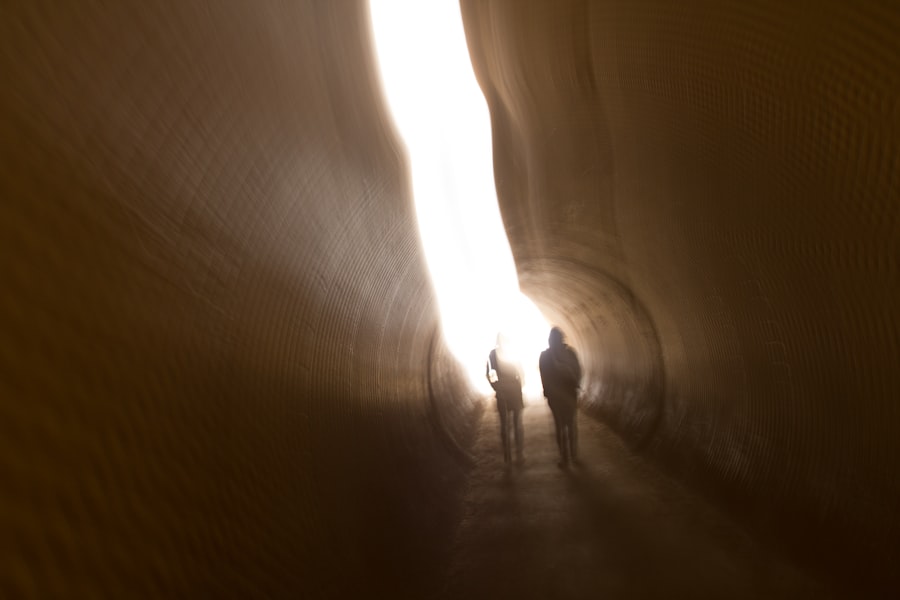The Drake Passage, a body of water situated between the southern tip of South America and Antarctica, is renowned for its tumultuous seas and significant role in global oceanic circulation. Named after the English explorer Sir Francis Drake, who navigated these waters in the late 16th century, the passage serves as a critical conduit for marine traffic and scientific exploration. Stretching approximately 800 kilometers (500 miles) wide, it is often regarded as one of the most challenging maritime routes due to its unpredictable weather and strong currents.
The passage not only connects the Atlantic and Pacific Oceans but also plays a pivotal role in the ecological dynamics of the Southern Ocean. The Drake Passage is more than just a geographical feature; it is a vital area for understanding climate change, oceanography, and marine biodiversity. Its unique position allows for the mixing of cold Antarctic waters with warmer currents from the north, creating a rich environment that supports a diverse array of marine life.
The passage is also a focal point for researchers studying the effects of climate change on ocean currents and ecosystems. As such, it has garnered significant attention from scientists and environmentalists alike, who seek to unravel the complexities of this dynamic marine environment.
Key Takeaways
- The Drake Passage is a narrow body of water between South America’s Cape Horn and the South Shetland Islands of Antarctica, known for its treacherous seas and strong winds.
- The Ring of Fire is a horseshoe-shaped area in the Pacific Ocean basin, known for its high volcanic and seismic activity, and is significant for its impact on global tectonic activity.
- The geological features of the Drake Passage include deep ocean basins, underwater mountain ranges, and a complex system of tectonic plates.
- Tectonic activity, including the movement of the South American and Antarctic plates, played a crucial role in the formation of the Drake Passage, creating a vital connection between the Atlantic and Pacific Oceans.
- The link between the Ring of Fire and the Drake Passage lies in the tectonic activity that has shaped both regions, influencing ocean currents and marine life.
The Ring of Fire and its significance
The Ring of Fire is a horseshoe-shaped zone of seismic activity that encircles the Pacific Ocean, characterized by a high frequency of earthquakes and volcanic eruptions. This region is home to about 75% of the world’s active and dormant volcanoes, making it one of the most geologically active areas on the planet. The significance of the Ring of Fire extends beyond its geological features; it plays a crucial role in understanding plate tectonics, natural disasters, and even climate patterns.
The movement of tectonic plates within this zone not only shapes the landscape but also influences ocean currents and marine ecosystems. The Ring of Fire’s impact is felt globally, as seismic events can trigger tsunamis that affect coastal communities far from their origin. Additionally, volcanic eruptions can release ash and gases into the atmosphere, influencing weather patterns and air quality across vast distances.
The interconnectedness of geological processes within the Ring of Fire highlights the importance of monitoring this region for both scientific research and disaster preparedness. Understanding the dynamics of this area is essential for predicting natural disasters and mitigating their effects on human populations and ecosystems.
Geological features of the Drake Passage

The geological features of the Drake Passage are as diverse as they are complex. The passage is characterized by deep oceanic trenches, underwater ridges, and various seafloor formations that have been shaped by millions of years of tectonic activity. One notable feature is the South Shetland Trench, which marks a significant geological boundary between the South American Plate and the Scotia Plate.
This trench is not only a site of intense seismic activity but also serves as a habitat for unique marine species adapted to its extreme conditions. In addition to trenches, the Drake Passage contains several underwater mountains and ridges that contribute to its intricate topography. These geological formations create varying depths and currents within the passage, influencing marine life and navigation routes.
The interplay between these features results in a dynamic environment where nutrient-rich waters rise to the surface, supporting an abundance of marine organisms. The geological complexity of the Drake Passage makes it a focal point for researchers interested in marine geology, oceanography, and biodiversity.
Tectonic activity and the formation of the Drake Passage
| Metrics | Details |
|---|---|
| Tectonic Activity | Movement of tectonic plates in the Earth’s crust leading to the formation of the Drake Passage. |
| Formation of Drake Passage | Resulted from the tectonic activity, creating a deep waterway between South America and Antarctica. |
| Age of Drake Passage | Believed to have formed around 30 million years ago due to tectonic movements. |
| Impact on Ocean Currents | The formation of the Drake Passage altered ocean currents and contributed to the development of the Antarctic Circumpolar Current. |
The formation of the Drake Passage is intrinsically linked to tectonic activity that has occurred over millions of years. The movement of tectonic plates in this region has led to significant geological changes, including the separation of South America from Antarctica. This rifting process began around 30 million years ago, resulting in the opening of the passage and creating a vital link between two major oceanic bodies.
The ongoing tectonic activity continues to shape the landscape, leading to the formation of new geological features and influencing ocean currents. Tectonic forces also contribute to the seismic activity observed in the Drake Passage. Earthquakes are common in this region due to the interaction between the South American Plate, Scotia Plate, and other surrounding plates.
These seismic events can have far-reaching consequences, including tsunamis that pose risks to coastal communities. Understanding the tectonic processes at play in the Drake Passage is crucial for predicting geological hazards and assessing their potential impact on both human populations and marine ecosystems.
The link between the Ring of Fire and the Drake Passage
The connection between the Ring of Fire and the Drake Passage is evident in their shared geological characteristics and seismic activity. Both regions are influenced by tectonic plate movements that result in earthquakes and volcanic eruptions. The Drake Passage lies at the southern edge of the Ring of Fire, making it susceptible to the same geological forces that shape this active zone.
Moreover, the interplay between these two regions affects oceanic currents and marine ecosystems. The tectonic activity associated with the Ring of Fire contributes to variations in water temperature and salinity within the Drake Passage, influencing marine life patterns.
As such, understanding this link is essential for researchers studying climate change, oceanography, and biodiversity in both regions. The interconnectedness of these geological features underscores the importance of comprehensive research efforts that consider both local and global implications.
Impact of tectonic activity on marine life in the Drake Passage

Tectonic activity in the Drake Passage has profound effects on marine life, shaping habitats and influencing species distribution. The underwater geological features created by tectonic movements provide diverse environments for various marine organisms. For instance, deep-sea trenches serve as unique habitats for specialized species that thrive in extreme conditions, while underwater ridges create areas rich in nutrients that support larger populations of fish and other marine life.
Additionally, seismic events can lead to changes in water temperature and salinity, which can impact marine ecosystems significantly. For example, an earthquake may trigger underwater landslides that alter habitats or release nutrients into the water column, leading to blooms of phytoplankton that support entire food webs. Understanding these dynamics is crucial for conservation efforts aimed at protecting marine biodiversity in this ecologically rich region.
Climate and weather patterns in the Drake Passage
The climate and weather patterns in the Drake Passage are heavily influenced by its geographical location and oceanic currents. The passage experiences some of the most severe weather conditions on Earth, characterized by strong winds, heavy precipitation, and rapidly changing temperatures. These conditions are primarily driven by the interaction between cold Antarctic air masses and warmer air from lower latitudes, creating a volatile atmosphere that can shift dramatically within short periods.
The unique climate of the Drake Passage also plays a significant role in global weather patterns. The mixing of cold and warm waters influences ocean currents that circulate around the globe, affecting climate systems far beyond this region. For instance, changes in sea surface temperatures within the passage can impact weather patterns in South America and even contribute to phenomena such as El Niño or La Niña events.
Understanding these complex interactions is essential for predicting climate variability and its potential impacts on ecosystems and human activities.
Research and exploration of the Drake Passage
Research and exploration of the Drake Passage have been ongoing for decades, driven by its significance for understanding oceanography, climate change, and marine biodiversity. Scientists from various disciplines have conducted extensive studies in this region to gather data on ocean currents, temperature variations, and species distributions. Advanced technologies such as remote sensing, underwater drones, and autonomous research vessels have enhanced researchers’ ability to explore this challenging environment.
The findings from research conducted in the Drake Passage have far-reaching implications for global science.
Additionally, ongoing research initiatives focus on understanding how climate change impacts this unique ecosystem, providing valuable insights into potential future scenarios for both marine life and human populations dependent on these resources.
Environmental concerns and conservation efforts in the Drake Passage
Environmental concerns surrounding the Drake Passage have grown in recent years due to increased human activity and climate change impacts. Shipping traffic through this vital route has risen significantly, raising concerns about pollution, invasive species introduction, and potential oil spills that could devastate local ecosystems. Additionally, climate change poses threats to marine biodiversity as rising temperatures alter habitats and disrupt food webs.
In response to these challenges, various conservation efforts have been initiated to protect this ecologically sensitive area. International agreements aim to regulate fishing practices and minimize human impact on marine life within the passage. Furthermore, research organizations collaborate with governments to monitor environmental changes and develop strategies for sustainable management of resources in this region.
These efforts are crucial for ensuring that future generations can continue to benefit from the rich biodiversity found within the Drake Passage.
The Drake Passage as a gateway to Antarctica
The Drake Passage serves as a critical gateway to Antarctica, facilitating access for researchers, tourists, and wildlife alike. Its strategic location makes it an essential route for scientific expeditions aimed at studying polar ecosystems and climate change impacts on ice sheets. The passage’s turbulent waters present challenges for navigation but also offer unique opportunities for exploration.
Tourism has also increased in recent years as adventurers seek to experience Antarctica’s pristine landscapes and diverse wildlife. However, this influx raises concerns about environmental sustainability and potential impacts on fragile ecosystems. Balancing access with conservation efforts is vital to ensure that both scientific research and tourism can coexist without compromising the integrity of this remarkable region.
Future implications and study of the Ring of Fire connection
The future implications of studying the connection between the Ring of Fire and the Drake Passage are vast and multifaceted. As climate change continues to influence global weather patterns and oceanic systems, understanding how these two regions interact will be crucial for predicting future environmental changes. Ongoing research efforts will likely focus on monitoring seismic activity within both areas to assess potential risks associated with natural disasters.
Furthermore, as scientists uncover more about how tectonic processes affect marine ecosystems in the Drake Passage, there may be opportunities for innovative conservation strategies aimed at protecting vulnerable species from climate change impacts. The interconnectedness between these regions highlights the importance of collaborative research efforts that consider both local dynamics and global implications for our planet’s health. In conclusion, exploring the intricate relationship between the Drake Passage and its geological context within the Ring of Fire reveals significant insights into our planet’s dynamic systems.
As researchers continue their work in this challenging yet vital region, they contribute not only to our understanding of Earth’s processes but also to efforts aimed at preserving its rich biodiversity for future generations.
The Drake Passage, a significant body of water connecting the Atlantic and Pacific Oceans, is often discussed in the context of the Ring of Fire due to its proximity to the tectonic activity in the region. For those interested in exploring more about the geographical and geological significance of the Drake Passage and its relation to the Ring of Fire, you can find a detailed article on the topic by visiting this page. This resource provides insights into the dynamic interactions between tectonic plates and the resulting seismic activities that characterize this part of the world.
WATCH NOW! Drake Passage: Earth’s Deadliest Waters Revealed
FAQs
What is the Drake Passage?
The Drake Passage is the body of water between the southern tip of South America and the South Shetland Islands of Antarctica. It is known for its rough seas and strong winds, making it a challenging route for ships to navigate.
Is the Drake Passage part of the Ring of Fire?
No, the Drake Passage is not part of the Ring of Fire. The Ring of Fire is a horseshoe-shaped area in the Pacific Ocean basin known for its frequent earthquakes and volcanic activity. The Drake Passage is located in the Southern Ocean, far from the Pacific Ocean basin.
What is the Ring of Fire?
The Ring of Fire is a region in the Pacific Ocean basin where a large number of earthquakes and volcanic eruptions occur. It is characterized by a series of tectonic plate boundaries, including the Pacific Plate, and is known for its seismic and volcanic activity.
Are there any tectonic plate boundaries in the Drake Passage?
Yes, the Drake Passage is located near the boundary between the South American Plate and the Antarctic Plate. This tectonic boundary is not as active as those found in the Ring of Fire, but it does contribute to the geological processes in the region.
